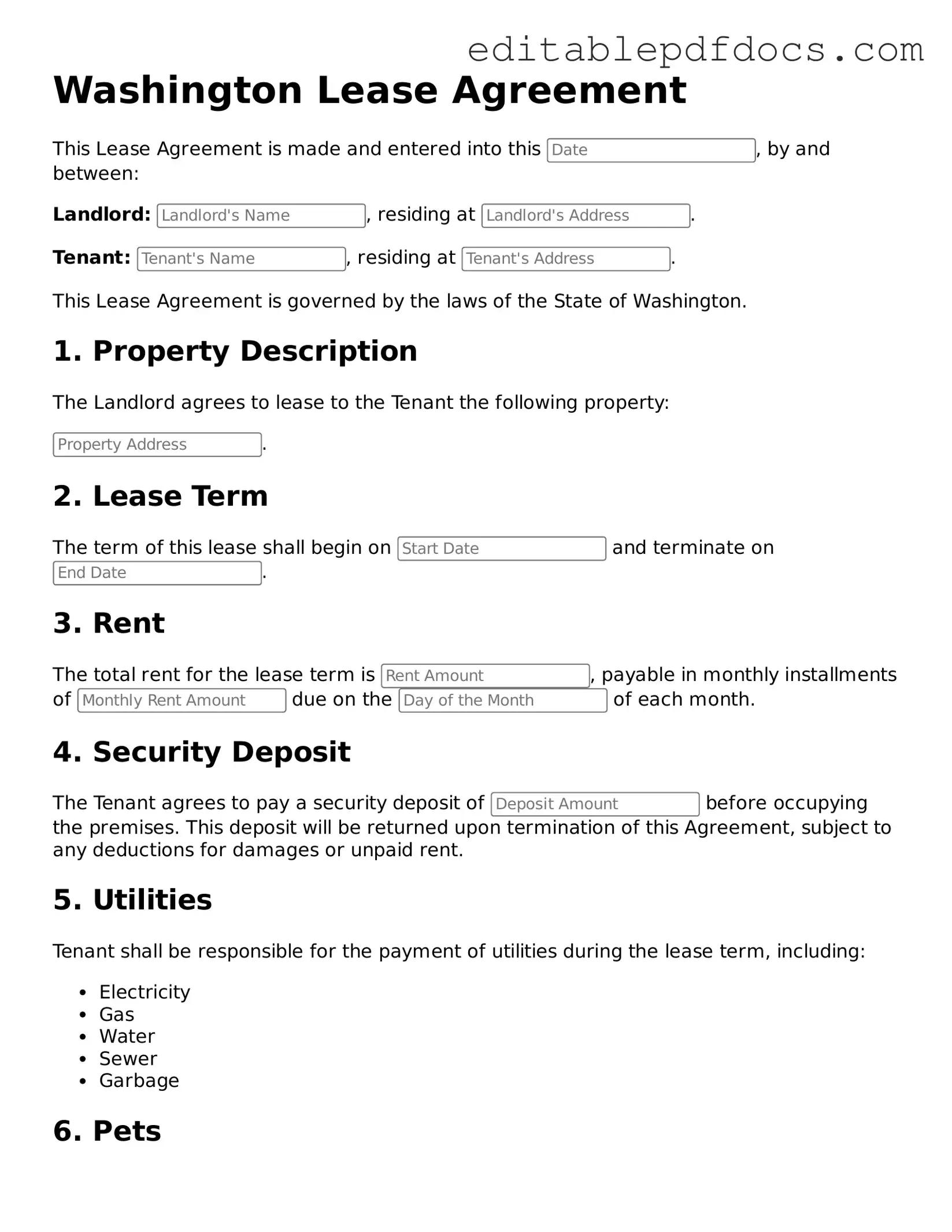Filling out a Washington Lease Agreement can be a straightforward process, but many individuals make common mistakes that can lead to confusion or legal issues down the line. One frequent error is failing to provide accurate tenant information. It’s essential to include the full names of all tenants who will be residing in the rental property. Leaving out a name or misspelling it can create complications if disputes arise later.
Another common mistake is neglecting to specify the lease term clearly. Whether it’s a month-to-month agreement or a fixed-term lease, both the landlord and tenant should understand the duration of the rental agreement. If this information is vague or missing, it can lead to misunderstandings about when the lease begins and ends.
Many people also overlook the importance of detailing the rent payment terms. This includes the amount due, the due date, and acceptable payment methods. If these terms are not clearly stated, it can lead to confusion about when and how rent should be paid, potentially resulting in late fees or disputes.
Another area where mistakes frequently occur is in the section regarding security deposits. Landlords must adhere to Washington state laws regarding the amount of the deposit and how it will be handled. Failing to outline the conditions for returning the deposit can lead to disagreements when the lease ends.
Additionally, people often forget to include information about maintenance responsibilities. Clearly defining who is responsible for repairs and upkeep can prevent future conflicts. If these responsibilities are not addressed, tenants may assume the landlord will handle all repairs, leading to frustration and potential legal issues.
Lastly, not reviewing the entire lease agreement before signing is a critical mistake. It’s vital for both parties to read through the document carefully to ensure that all terms are understood and agreed upon. Rushing through this process can lead to overlooking important details that could affect the rental experience.
